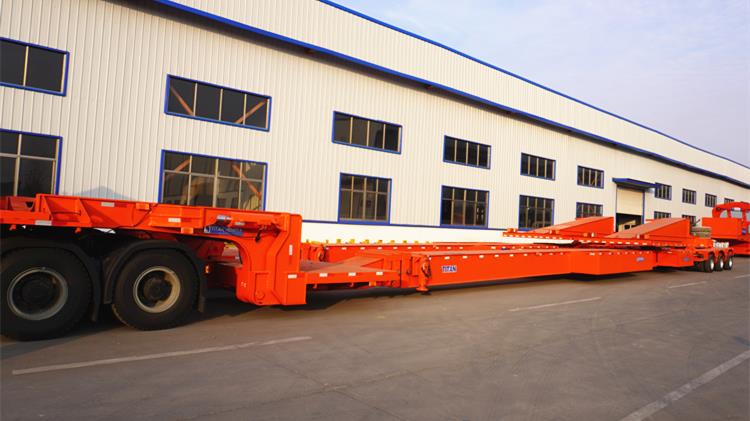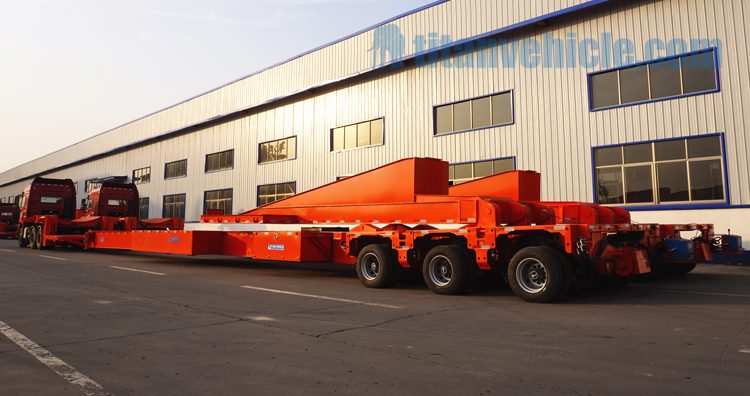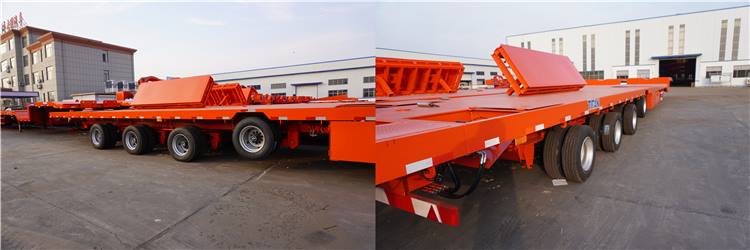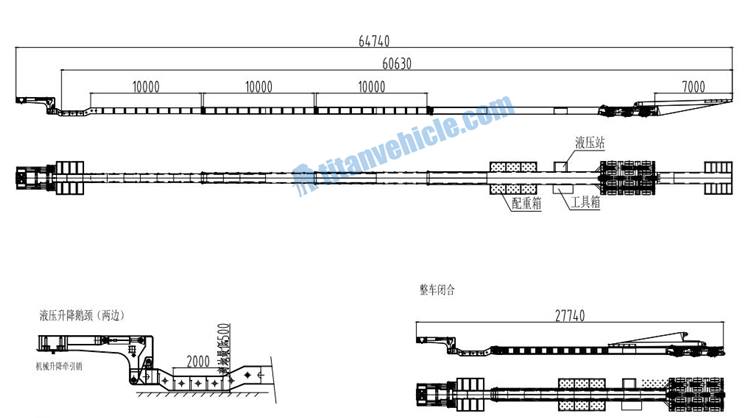The extendable trailer structure is a trailer mechanism that is designed and adapted to be towed and used when the tractor is traveling along the road.
The extensions on the trailer can effectively bear loads that may have different lengths due to work needs.
The mechanism of this type of trailer may include a front chassis and a rear chassis arranged in a telescopic connection, wherein each chassis can be supported by a separate wheel and axle assembly.
They can be tilted side by side in the retracted state of the mechanism.
The configuration can be spaced in an extended format of the mechanism.

Both the rear and front chassis cooperate in this way, allowing the chassis to tilt in a largely rigid connection
When the trailer mechanism contracts, as the trailer mechanism extends, the chassis frame is hinged around an excessive horizontal axis.
A device forming a locking mechanism is provided to fix the rear frame frame and the front frame frame in the assembly in the extended and contracted state of the transport mechanism.
The main components of the trailer are the powertrain, gooseneck, wheels, support device, frame electrical system, hydraulic suspension, braking system, ladder and hydraulic system.
They are essential to define the role and operation of the extended trailer. These types of trailers can be configured in different ways: longitudinal or horizontal. The following are two types of scalable trailer models:

Longitudinally Extendable Trailers
Longitudinally extendable is commonly used to transport very long cargo, like tanks and windmill blades and bridge sections among other similar-like cargo.
To take these loads, the trailer is extended lengthwise. When it is not carrying any load, it needs to be adjusted back to a short length. Its application and use should, however, be based on the stipulated local laws and driving safety.
Wide Extendable Trailers
Wide extendable trailers are commonly used for taking loads that are big width-wise. The trailer is normally expanded horizontally to give room for such loads.
When it is not taking any load, it needs to be adjusted back to a short width based on the local laws and rules governing driving safety.
To meet the needs of the large-scale movement and transportation of wide cargo on roads, the frame width of the trailer gets adjusted to take up the job.

Longitudinal Extendable Trailer Basic Configuration
A conventional extendable trailer configuration has a fixed frame and an additional frame that can be connected to the fixed one.
The second frame makes a slide-able contact with the fixed frame to provide the desired longitudinal extension.
This means that the free frame can move in a relative way to the fixed frame for purposes of either lengthening or shortening the apparatus of the trailer.
The movable frame is usually situated at the rear section of the tractor-towed trailer. This freely moving trailer is made up of a set of wheels and axle firmly secured to it.
Securing of the load is firmly made to the fixed frame.

The said sections can be moved with the manual turning of a crank or through the use of an electrically powered motor via the provided power unit.
In this setup, there is a horizontal expansion that leads to an extension that occurs width-wise giving room for taking up maximum width loads.
When needed to take smaller loads width-wise, it can be contracted to provide a floor space that can contain the given load.
The manoeuvrability features are comparable to those of a ramp lift that can be adjusted to perfectly lift a given load off the ground.
Once the loading is done onto the extendable trailer, it can then be towed by a tractor to move it to the desired location.
These extendable trailers take different forms. A trailer mechanism is provided for coupling to a pivot-able trailer ramp to help during the manual lowering and lifting of a ramp.
The ramp’s lateral positioning is made possible in order to accommodate different load bases.
With such possibilities, you can make the most suitable adjustments to ensure that your load is safely seated on the trailer without fears of falling off during transportation.
Through the video below, you can learn about different types of extendable trailers (like extendable trailer , telescopic trailer , windmill blade transport , extendable flatbed trailers , extendable semi-trailer , long vehicle trailer)
And the process, testing, packaging and customer feedback, etc.
If you want to know more information about extendable trailer, please click "Extendable Trailers".